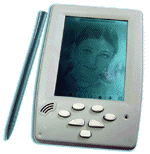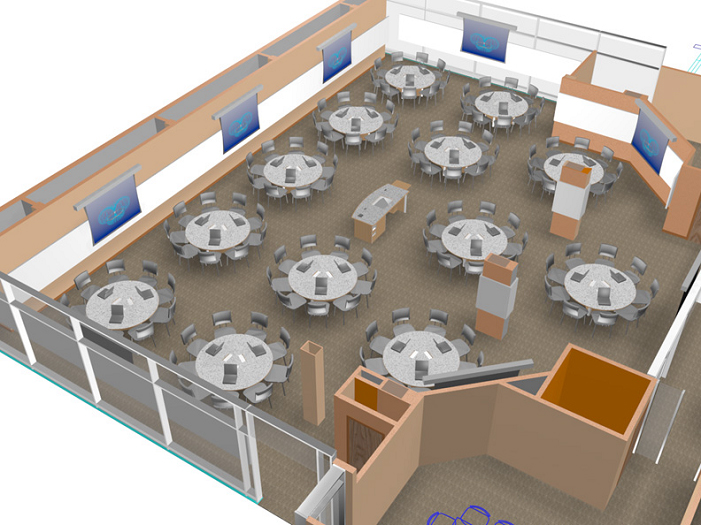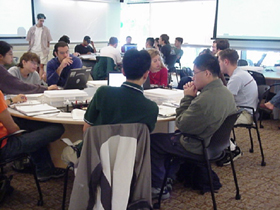Flexible Learning Modules for Indigenous Education
 Education was an area identified by the Australian Government for more support for remote indegnious communities was. However, more school buildings will be required if more aboriginal children attend school. Also it will be difficult to obtain sufficient trained teachers willing to work in remote areas, nor provide educators in advanced subjects or for adult education. Part of the answer would be to provide networked computer enhanced flexible learning centers in pre-built modules.Advanced computer based learning systems can be used for elementary education in remote areas and by people with limited literacy. Examples are the
Education was an area identified by the Australian Government for more support for remote indegnious communities was. However, more school buildings will be required if more aboriginal children attend school. Also it will be difficult to obtain sufficient trained teachers willing to work in remote areas, nor provide educators in advanced subjects or for adult education. Part of the answer would be to provide networked computer enhanced flexible learning centers in pre-built modules.Advanced computer based learning systems can be used for elementary education in remote areas and by people with limited literacy. Examples are the 
 Simputer, which was designed for Indian villages and the “zoom” interface of the OLPC $100 Children's Machine for education in developing nations. Wireless terrestrial (WiMax/3G) and satellite networks can be used to provide connectivity and accessible web design can enhance the usability.
Simputer, which was designed for Indian villages and the “zoom” interface of the OLPC $100 Children's Machine for education in developing nations. Wireless terrestrial (WiMax/3G) and satellite networks can be used to provide connectivity and accessible web design can enhance the usability.Prefabricated modules could be mass produced for upgrading the education services in remote indigenous communities. The modules could be built in regional centres using local labor and then transported to the communities and used to upgrade existing schools and community centers.
One of the problems to be addressed by the Australian Government's emergency response to the Protection of Aboriginal Children Report is education. Even if sufficient funding was available to provide teachers for remote indigenous communities, qualified persons would not be available for all the education required. Nor would there be sufficient tradespeople to build schools rapidly enough.
It is therefore suggested that modular classrooms could be built in factories for modular and prefabricated housing. The modules would be equipped with wireless broadband and computer facilities for education, as well as power, water and lighting. The equipment would be ruggidized to survive transportation to the site and use. The same technology on a smaller scale would be used for housing.
The modules would be the size of a ISO shipping container. Rather than build the components into the smallest possible space, where they would need to then be connected by qualified trades people, it is proposed to install them in a building module, providing the rooms where the services are delivered (classroom, kitchen and bathrooms). In this way the services can be pre-connected to the delivery point. The empty space in the module would be used to transport components which need to be installed outside the building, such as solar panels or wind generators.
The modules could use one of the many available modular building technologies to construct a unit the size of a standard ISO container for ease of transport. The modules would be fitted out with classrooms, bathrooms and kitchens, with fixtures and fittings included. The fit-out would be customized for different regions. Where reliable reticulated water and power are available, the building would equipped for connection.
For remote areas, solar and/or wind power generation and battery storage would be installed. Water would be provided by in-built pumps and a modular water tank transported in the module. At toilet would be installed for sewage/septic, or in dry areas a waterless composting toilet would be used. A wireless terrestrial (WiMax/3G) or satellite would be fitted.
 The classrooms would be fitted out as flexible learning centres, complete with wall and desk mounted computer screens. The screens would be built into the building with rugged dust proof and reinforced enclosures to protect them during transport and when in use. The equipment would provide access to global educational resources, from pre-school, trough K-12 to vocational, university and adult classes.
The classrooms would be fitted out as flexible learning centres, complete with wall and desk mounted computer screens. The screens would be built into the building with rugged dust proof and reinforced enclosures to protect them during transport and when in use. The equipment would provide access to global educational resources, from pre-school, trough K-12 to vocational, university and adult classes.The classrooms would be smaller versions of the MIT TEAL (Technology Enabled Active Learning) technology. This provides a combination of mini lectures and lab sessions in the one nightclub style room.
 The MIT TEAL leaning rooms accommodates groups of students at tables sharing a computer. The walls are equipped with conventional white and blackboards as well as video projection screens.
The MIT TEAL leaning rooms accommodates groups of students at tables sharing a computer. The walls are equipped with conventional white and blackboards as well as video projection screens. University of Melbourne uses similar technology in its Collaborative Learning Spaces. MIT research shows the TEAL approach produces better results than traditional classes. The environment is particularly good for helping the poorer performing students and for retaining groups who may have been disadvantaged by traditional teaching methods, including females and those from indigenous communities.
The classrooms could be used for university level students as well as primary and secondary school. The Australian Computer Society provides online education modules for IT professionals, using the Australian Moodle system, which would be able to be used via such a system.
The system could also be used for training local government staff in how to administer their local community. I used my own installation of the Moodle system for a one day commercial industry course on writing for the web with 24 students from local government.
 Design with Australian Research and Defence Help
Design with Australian Research and Defence HelpAustralian Defence Force personnel are being used to assist with logistics for aiding indigenous communities. This includes the building of some facilities. The ADF could aid in the design and deployment of modular computerized classrooms.
More advanced versions of the same modules could be used as deployable headquarters facilities for the ADF. Use of such containerized facilities is envisaged in 2012 on the new amphibious ships HMAS Canberra and HMAS Adelaide.
Australian universities, including the ANU are investigating smaller and lower cost versions of the MIT technology. LCD screens with VESA Mounts can be used in place of projection screens. WiFi communications to wireless, battery powered devices could be used. Thin client workstations, can be used in place of PCs. Low cost devices, such as the ASUS "Eee PC" and MIT $100One Laptop Per Child.
Labels: ASUS Eee PC, Childrens Machine, developing nations, education, flexible learning centre, Shipping Container, Thin Client Computing


1 Comments:
Pin Foundations might be useful for containerized and prefabricated buildings:
"The precast concrete head is installed at the ground surface and pre-determined lengths of pipe are slid through receiver holes cast in the concrete and driven into the ground using simple hand tools.
This is the best way to install a reliable and durable foundation that will last the lifetime of your structure. Any penetrable, native soil or compacted fill can be accommodated - even frost, expansive or saturated soils. ..."
August 26, 2007 4:51 PM
Post a Comment
Links to this post:
Create a Link or bookmark with Digg, del.icio.us, Newsvine or News Feed
<< Home